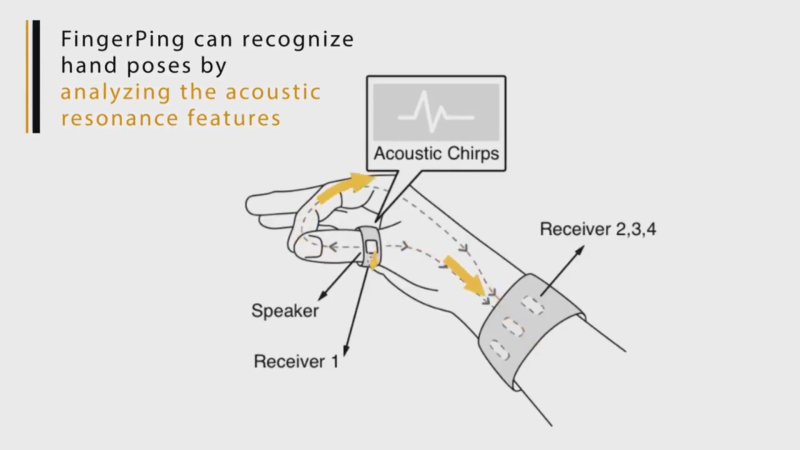Sonar measures distance by emitting a sound and clocking how long it takes the sound to travel. This works in any medium capable of transmitting sound such as water, air, or in the case of FingerPing, flesh and bone. FingerPing is a project at Georgia Tech headed by [Cheng Zhang] which measures hand position by sending soundwaves through the thumb and measuring the time on four different receivers. These readings tell which bones the sound travels through and allow the device to figure out where the thumb is touching. Hand positions like this include American Sign Language one through ten.
From the perspective of discreetly one through ten on a mobile device, this opens up a lot of possibilities for computer input while remaining pretty unobtrusive. We see prototypes which are more capable of reading gestures but also draw attention if you wear them on a bus. It is a classic trade-off between convenience and function but this type of reading is unique and could combine with other bio signals for finer results.
Thank you, [QES], for the tip.
















Way interesting. I was wondering if the remote control of living creatures can be accomplished using TDR or more-so the wireless methods for not only bones… I figure the nervous system where there may be applications for neurosurgeons also and if high resolution enough… seems down to the individual neuron or at least neuronal cluster. Individual neuron must be feasible I’m thinking. Not only for hacking the EEG AC/DC signal out. Probably have two active wireless focal points where one is the emitter and one is the detector.
Pretty slick!
Though I have to wonder how this is an improvement over traditional inputs like a mechanical keyboard or touch screens.
I wonder if it’s sensitive enough to be used in medical diagnostics. Stress fractures are a huge worry for endurance athletes and military programs, diagnosing them early could drastically shorten recovery time since the injury won’t be as severe.
I’m no doctor, but if you could constantly monitor the tibia, for example, while running, it could detect if something changes. It might have to factor in things like speed, hills, and temperature, but it might be able to tell a lot about performance and possibly detect warning signs. Neat idea, Leithoa.
I was thinking more intermittantly, weekly or something. Like you said the ‘tone’ will change if theres an issue, if a tendon starts to tear off or the bone breaks, like how grinding wheels or porceline ring when intact but are dull if they’re compromised
https://www.ncbi.nlm.nih.gov/pmc/articles/PMC1798191/
Seems to be slightly promising
Truly a boneshaker.
I have to hand it to you, that was pretty good.
High Five